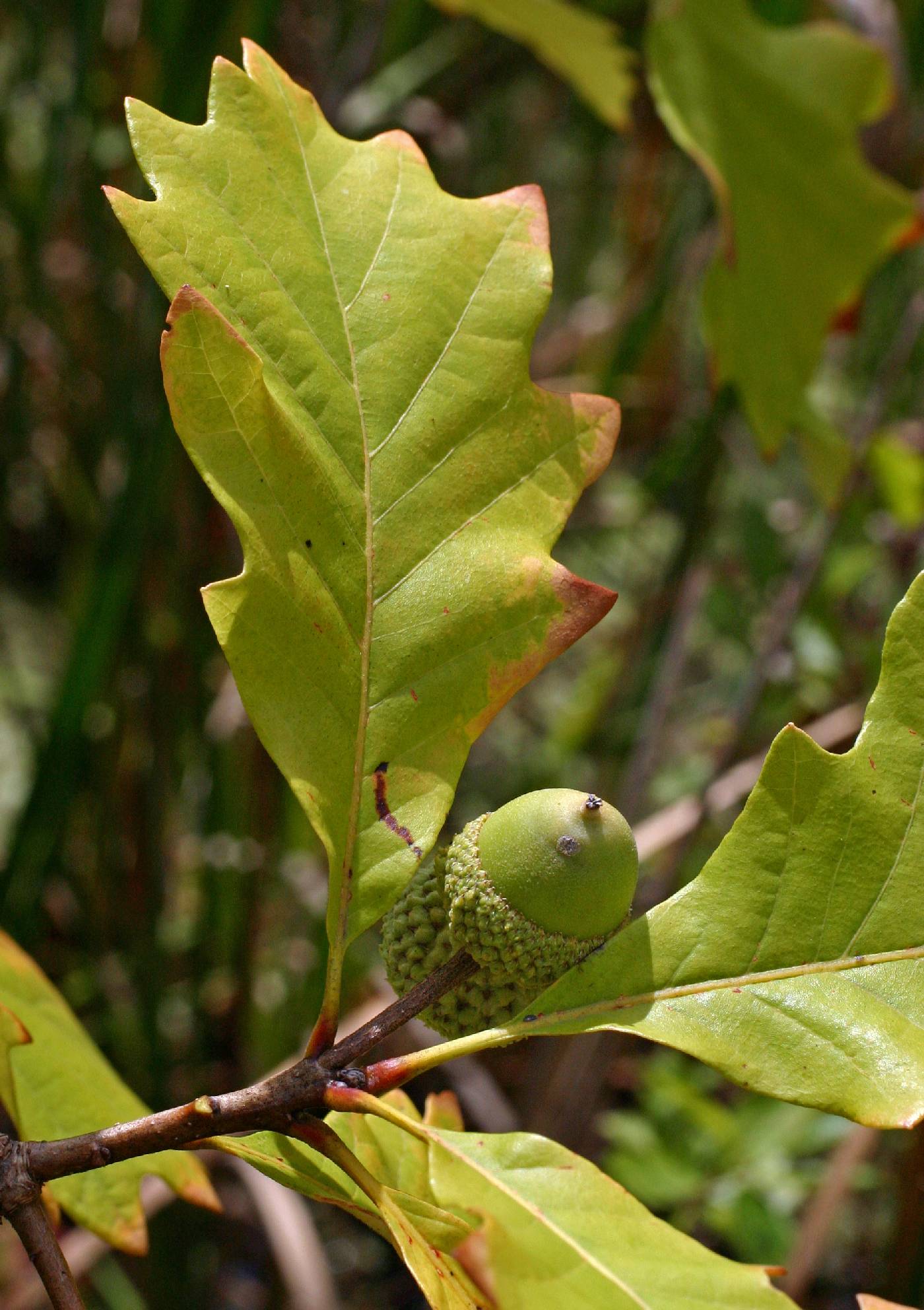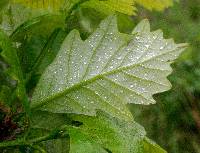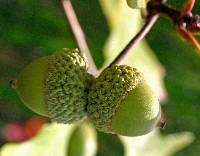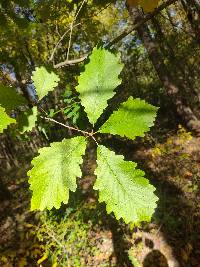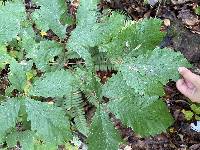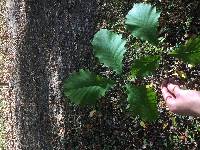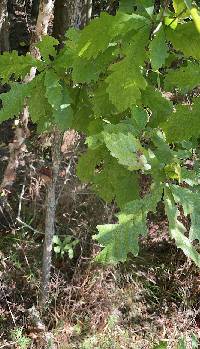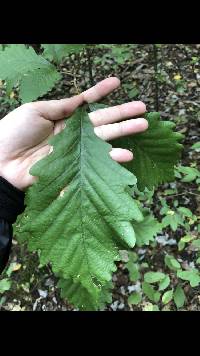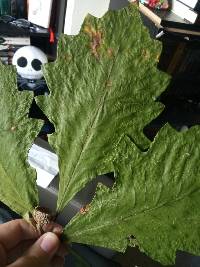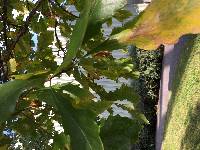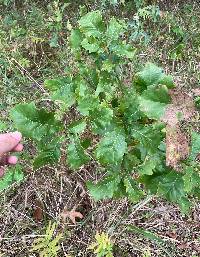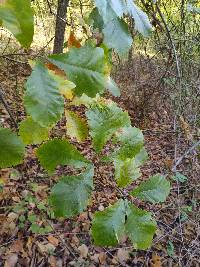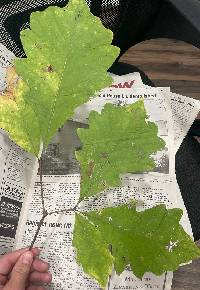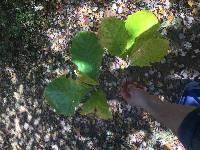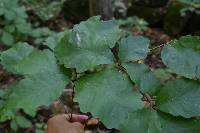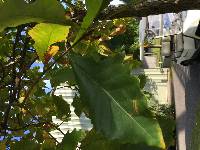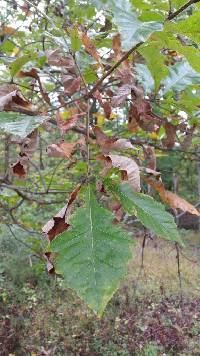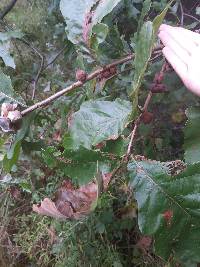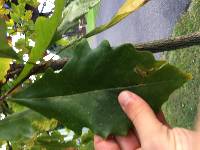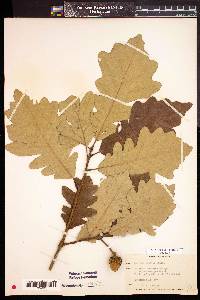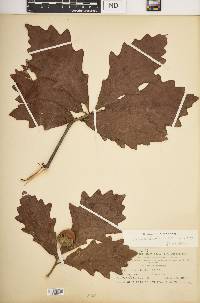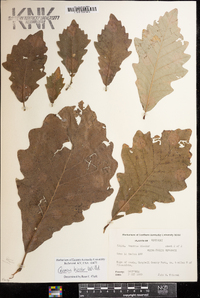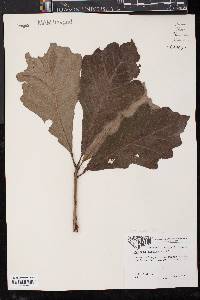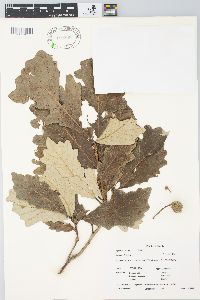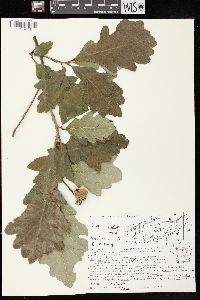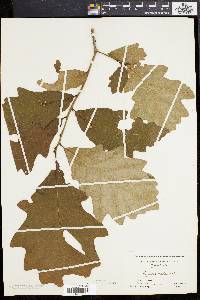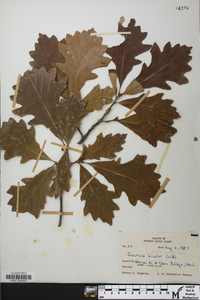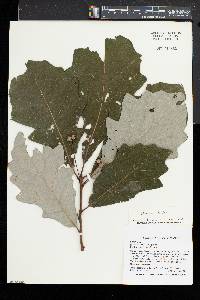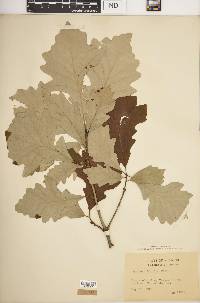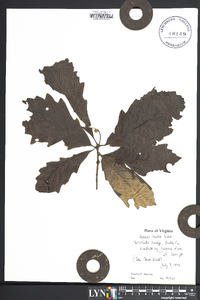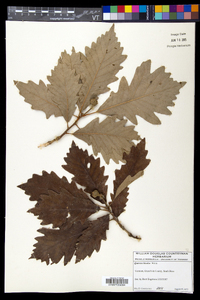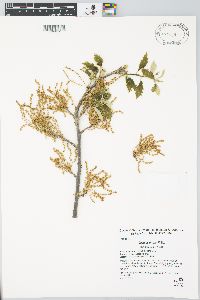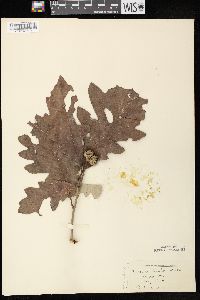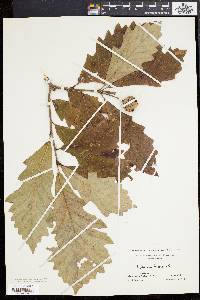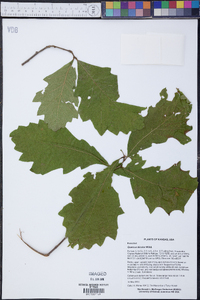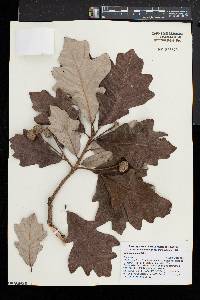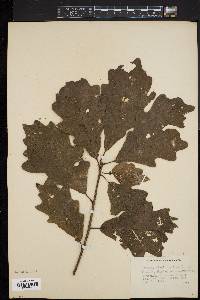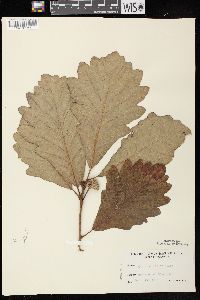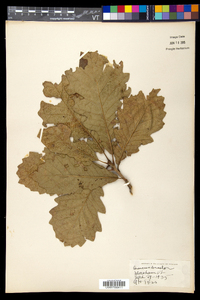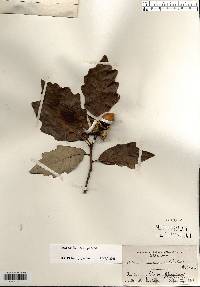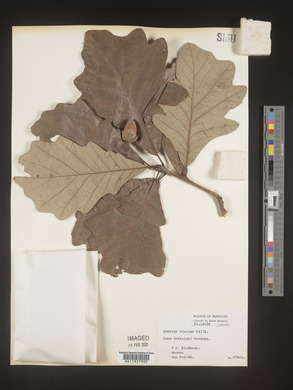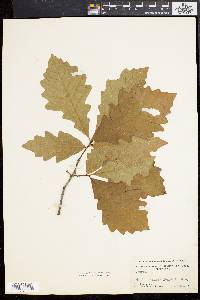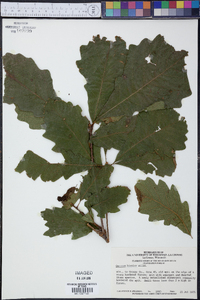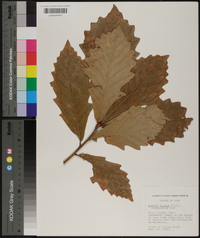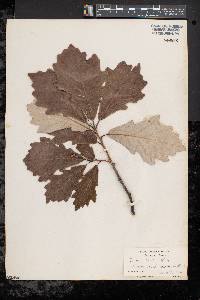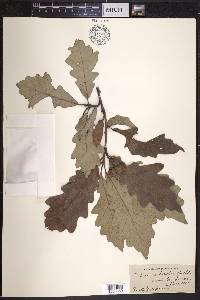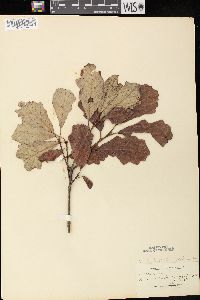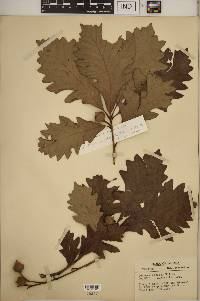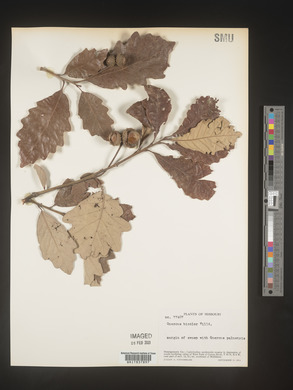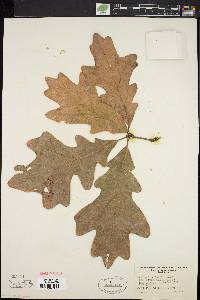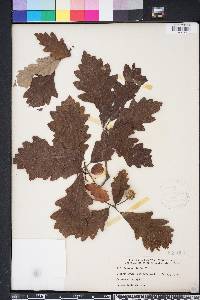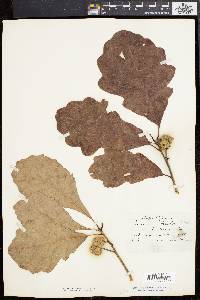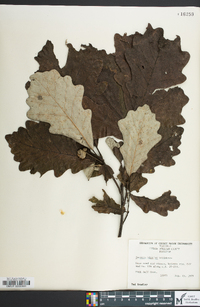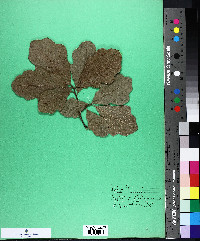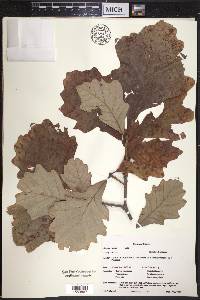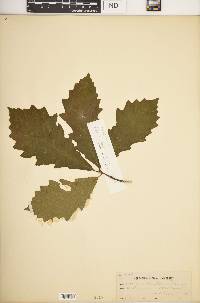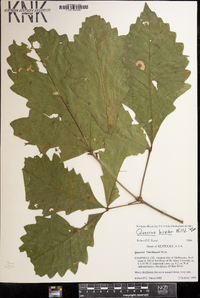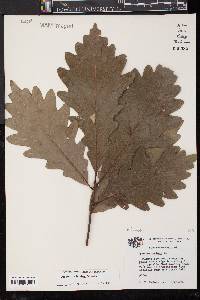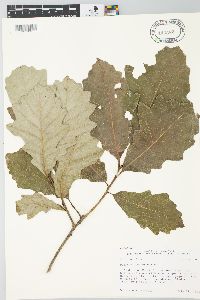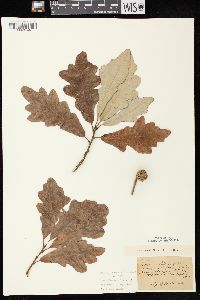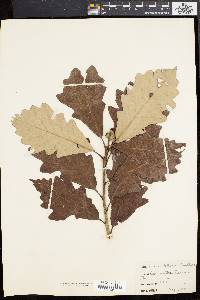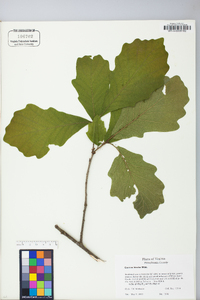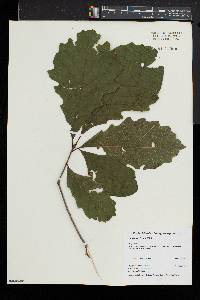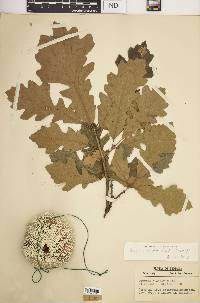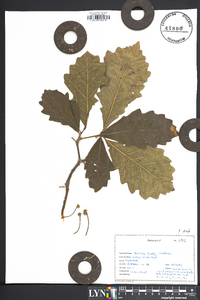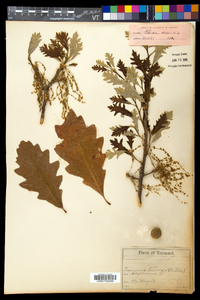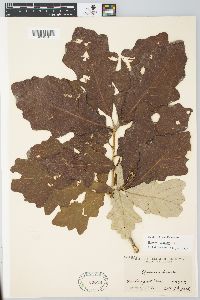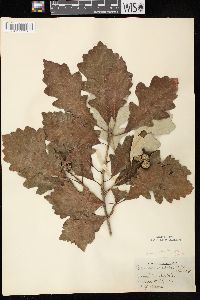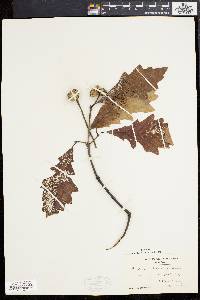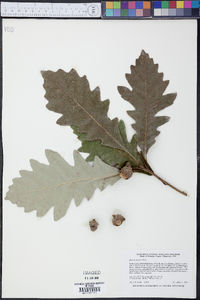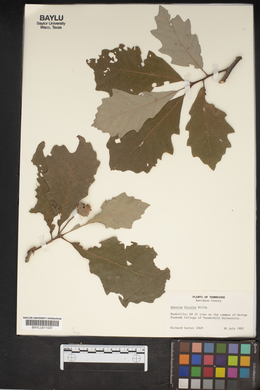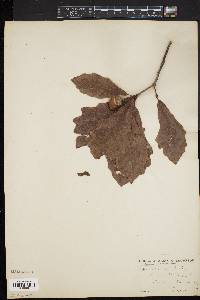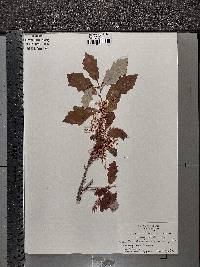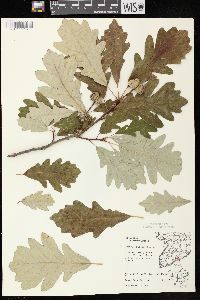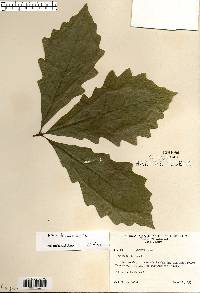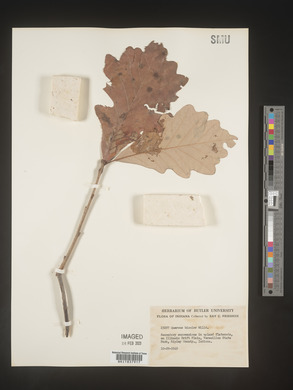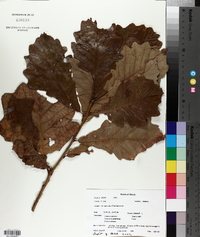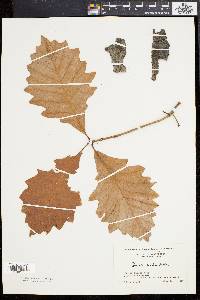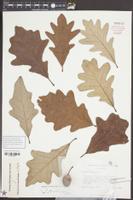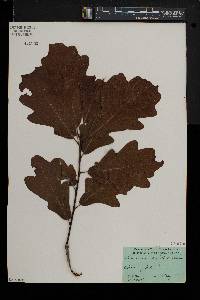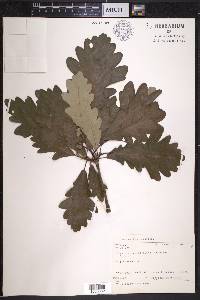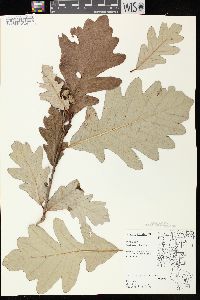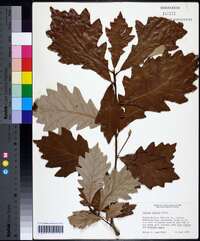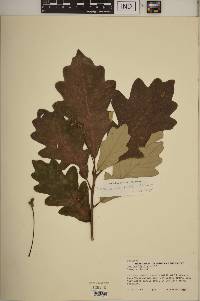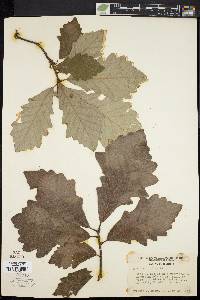Quercus bicolor
|
|
|
|
Family: Fagaceae
Swamp White Oak
[Quercus platanoides (Lam.) Sudw.] |
Trees , deciduous, to 30 m. Bark dark gray, scaly or flat-ridged. Twigs light brown or tan, 2-3(-4) mm diam., glabrous. Buds light or dark brown, globose to ovoid, 2-3 mm, glabrous. Leaves: petiole (4-)10-25(-30) mm. Leaf blade obovate to narrowly elliptic or narrowly obovate, (79-)120-180(-215) × (40-)70-110(-160) mm, base narrowly cuneate to acute, margins regularly toothed, or entire with teeth in distal 1/2 only, or moderately to deeply lobed, or sometimes lobed proximally and toothed distally, secondary veins arched, divergent, (3-)5-7 on each side, apex broadly rounded or ovate; surfaces abaxially light green or whitish, with minute, flat, appressed-stellate hairs and erect, 1-4-rayed hairs, velvety to touch, adaxially dark green, glossy, glabrous. Acorns 1-3(-5) mm, on thin axillary peduncle (20-)40-70 mm; cup hemispheric or turbinate, 10-15 mm deep × 15-25 mm wide, enclosing 1/2-3/4 nut, scales closely appressed, finely grayish tomentose, those near rim of cup often with short, stout, irregularly recurved and sometimes branched, spinose awns emerging from tubercle; nut light brown, ovoid-ellipsoid or oblong, (12-)15-21(-25) × 9-18 mm, glabrous. Cotyledons distinct. 2 n = 24. Flowering in spring. Low swamp forests, moist slopes, poorly drained uplands; 0-1000 m; Ont., Que.; Ala., Conn., Del., Ill., Ind., Iowa, Ky., Maine, Md., Mass., Mich., Minn., Mo., N.H., N.J., N.Y., N.C., Ohio, Pa., R.I., Tenn., Vt., Va., W.Va., Wis. Putative hybrids between Quercus bicolor and Q . macrocarpa are common in areas of contact. The hybrids tend to have more deeply lobed leaves and varying degrees of development of awns as a fringe along the margin of the acorn cup. Such characteristics occur sporadically throughout many populations of Q . bicolor ; in some cases they may occur because of subtle introgression. The Iroquois used Quercus bicolor in the treatment of cholera, broken bones, consumption, and as a witchcraft medicine (D. E. Moerman 1986).
Tree 15 - 30 m tall, trunk 0.66 - 1 m in diameter Leaves: alternate, short-stalked, shiny dark green above, pale green to silvery white and hairy beneath, 12 - 18 cm long, 5 - 12 cm wide, inversely egg-shaped with a wedge-shaped base, coarsely round-toothed or shallowly lobed. Foliage turns yellowish brown to orange in fall. Flowers: either male or female, found on the same plant (monoecious). Male flowers are borne in hanging catkins, yellowish green, and 7 - 10 cm long, while female flowers are borne in small clusters near leaf axils. Fruit: an acorn, developing in one season, usually in pairs, sometimes solitary, with a 2.5 - 10 cm long stalk. The bowl-shaped cup covers one-quarter to half of the nut and has scales that are thicker near the base with a lightly fringed margin. Nut light brown, 2 - 3 cm long and oblong to almost cylindrical. Bark: reddish brown and peeling when young, becoming grayish brown and deeply fissured with flattened ridges. Twigs: changing from shiny green and reddish brown to peeling and dark brown. Buds: light to dark brown, 2 - 4 mm long, egg-shaped to almost spherical with a rounded tip. Each terminal bud is surrounded by a cluster of lateral buds. Form: oval and open. Similar species: Many oaks in the white oak group and Quercus robur have highly variable, similar leaves with rounded lobes. Quercus alba often has deeply lobed leaves, light gray bark usually with smooth patches, and an acorn cup covered with warty scales. Quercus lyrata has leaves that are inversely egg-shaped with irregular, rounded lobes, and an acorn cup that nearly covers the nut. Quercus macrocarpa has deeply lobed leaves that are inversely egg-shaped and hairy beneath, often corky-ridged twigs, and an acorn cup with long fringes along the margin. Quercus robur has very short-stalked leaves with ear-like lobes at the base, and a long-stalked acorn cup. Flowering: May Habitat and ecology: Locally common in lowlands, moist woods, floodplains, near swamps, and in poorly drained uplands. Occurence in the Chicago region: native Notes: Quercus bicolor naturally hybridizes with Q. macrocarpa (Q. x schuettei). Etymology: Quercus is the Latin name for oak. Bicolor comes from the Latin word meaning "of two colors,"which refers to the differences in upper and lower leaf surfaces. Author: The Morton Arboretum Tree to 30 m, with thick, dark, furrowed and flat-ridged bark; lvs obovate, cuneate to a rounded or acute base, with 6-10 pairs of coarse, irregular, rounded teeth, pale or whitened beneath with pubescence of both short, horizontally spreading and erect, few-branched stellate hairs, rather velvety to the touch; winter-buds glabrous or nearly so; peduncles (2-)4-7 cm, usually with 2 acorns; cup hemispheric, covering about half the nut, the lower scales strongly convex on the back, the upper scales long-acuminate or even caudate; nut broadly ovoid, 1.5-2.5 cm. Flood-plains and other poorly drained sites; Que. and Me. to s. Mich. and c. Minn., s. to N.C., Tenn., and n. Ark. Gleason, Henry A. & Cronquist, Arthur J. 1991. Manual of vascular plants of northeastern United States and adjacent Canada. lxxv + 910 pp. ©The New York Botanical Garden. All rights reserved. Used by permission. From Flora of Indiana (1940) by Charles C. Deam This species is more or less frequent throughout the state although there are no reports from Benton, Jasper, and Newton Counties. In the northern part of the state, it is usually found on a "gumbo" hardpan soil associated most commonly with pin oak. In the southern part of the state in the "flats," it is found in hard, white clay soil with pin oak and swamp chestnut oak. …… Indiana Coefficient of Conservatism: C = 7 Wetland Indicator Status: FACW Deam (1932): Commercially the wood is not distinguished from white oak and the cut is sold for that species. |
|
|
|

